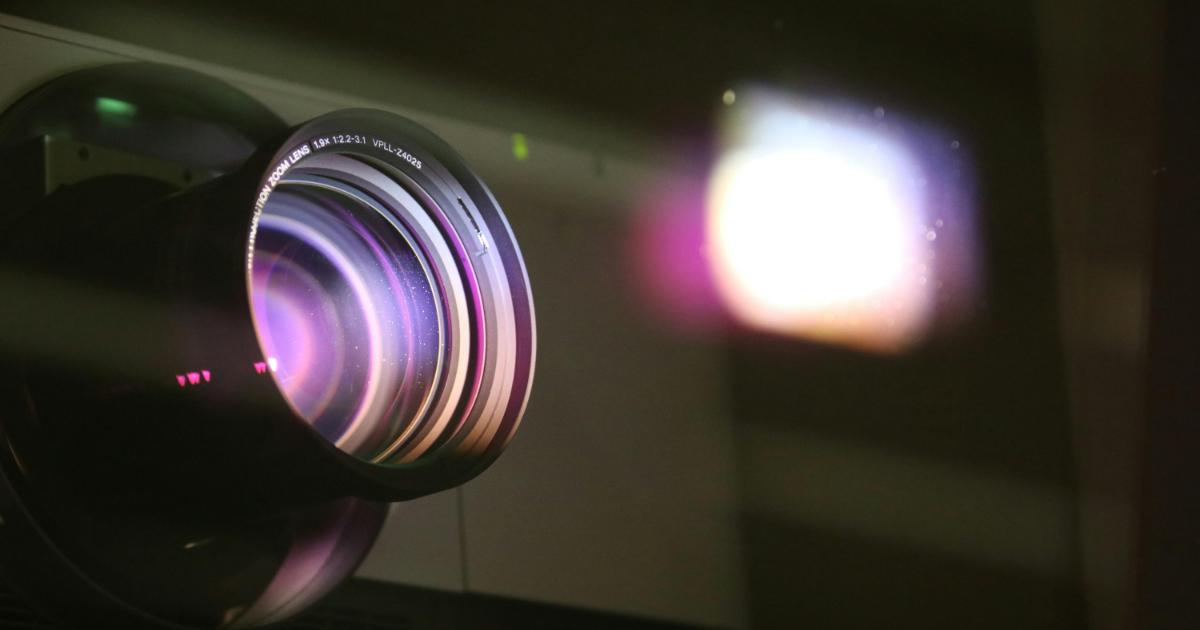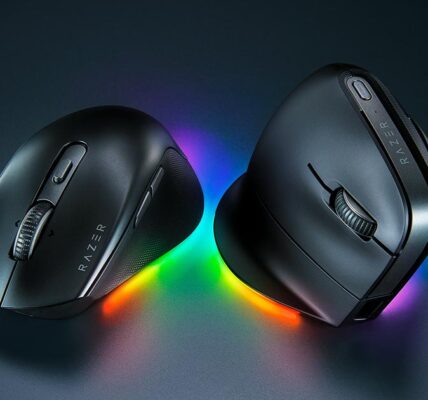Myths busted: The TV vs Projector debate
Note: This feature was first published on 28 March 2025.

In today’s world of home entertainment, purchasing a large TV screen is the go-to choice for many, with projectors usually an afterthought at best. This is due largely to the misconceptions about projectors and their use.
Despite the growing availability and advancements in projector technology, many still believe that TVs are the superior option for big-screen viewing, often citing issues like brightness, clarity, and ease of use.
This mindset persists largely because TVs are familiar and convenient, while projectors are often seen as cumbersome or requiring too much space or setup. There’s still some truth to that, but the barriers and concerns have improved dramatically over the last few years. As such, projectors, with their ability to deliver stunning, cinematic experiences at larger sizes, offer a compelling entertainment alternative that many, unfortunately, overlook.
So, it becomes necessary to address why people gravitate towards TVs and the myths that drive the decision between the two.
Myth 1: Projectors need a lot of space

The myth that projectors need a lot of space most likely comes from having used projectors in school and remembering them as needing a lot of space. But like all myths, it isn’t entirely true. Here’s a breakdown of the factors at play:
- 1. Throw Distance (How Far the Projector Needs to Be from the Screen)
- Traditional projectors with standard lenses need space between the projector and the screen (or wall) to produce a large image. This used to mean that the image size you wanted would dictate the distance needed between them.
- But modern projectors offer great flexibility with short-throw and ultra short-throw projector options; the latter type can project a large image from just a few centimetres away from the wall or screen. So, if throw distance and placement space is limited, there are several options that can now comfortably work in even smaller rooms.
- If you’re in a tight space, you can adjust the image size and the throw distance or even use wall-mounted screens (all covered later) to better manage the available space.
- Traditional projectors with standard lenses need space between the projector and the screen (or wall) to produce a large image. This used to mean that the image size you wanted would dictate the distance needed between them.
- 2. Ceiling/Wall/Shelf-based Mounting
- While you might think you need a desk or mount in the middle of a room, a huge dedicated space is no longer needed. These days, many projectors can be mounted on the ceiling or even placed on a small shelf (depending on the projector type) at the back of your room. Mounting and even shelf-based placement frees up valuable usable space in your room or home for more practical needs and makes the most of your available space.
- While you might think you need a desk or mount in the middle of a room, a huge dedicated space is no longer needed. These days, many projectors can be mounted on the ceiling or even placed on a small shelf (depending on the projector type) at the back of your room. Mounting and even shelf-based placement frees up valuable usable space in your room or home for more practical needs and makes the most of your available space.
- 3. Portability and Size
- There are now compact, portable projectors (even mini projectors) that don’t require a permanent setup. These can project decent-sized images (usually up to 100-inches across), with reasonable brightness and sound.
- While traditional projectors might have required a larger and dedicated space, there are plenty of modern, compact models designed for small spaces without sacrificing quality. So, it’s all about choosing the right projector for your space!
- There are now compact, portable projectors (even mini projectors) that don’t require a permanent setup. These can project decent-sized images (usually up to 100-inches across), with reasonable brightness and sound.
Myth 2: Projectors aren’t ideal for gaming and their output isn’t as good as a TV!

The myth that projectors aren’t ideal for gaming is outdated and doesn’t hold up when you consider modern projector technology. In fact, projectors can be “great for gaming”, and here’s why:
- 1. Larger Display
- One of the most obvious advantages of using a projector for gaming is the larger screen size. You can turn your entire wall into a giant gaming screen, which gives you an immersive experience that TVs, even large ones, can’t match.
- If you’re into racing games, first-person shooters, or open-world role-playing games, the bigger display heightens the excitement and brings a whole new level of immersion. Thanks to short-throw technology, even portable projectors can project an image up to 100 inches in size.
- One of the most obvious advantages of using a projector for gaming is the larger screen size. You can turn your entire wall into a giant gaming screen, which gives you an immersive experience that TVs, even large ones, can’t match.
- 2. Improved Projector Technology
- While older projectors might have had issues with resolution, input lag, and refresh rates, some of the latest projectors have received a technology bump that helps put them on par with a TV. Indeed, there are even gaming projectors to help even things out.
- Many now feature:
- 4K resolution or high-definition quality for a crisp, clear image.
- These gaming-oriented projectors offer low input lag as low as 16ms, which is fast enough for competitive gaming, and high refresh rates (120Hz or more), which helps ensure smooth and responsive gameplay.
- Many also support technologies like AMD Freesync, which allows users to enjoy optimised PC gaming on the big screen.
- While older projectors might have had issues with resolution, input lag, and refresh rates, some of the latest projectors have received a technology bump that helps put them on par with a TV. Indeed, there are even gaming projectors to help even things out.
- 3. Cinematic Experience
- For single-player games or couch co-op, a projector can create a cinematic gaming experience. Imagine playing your favourite game on a giant screen with full surround sound — it’s like stepping inside the game.

- For single-player games or couch co-op, a projector can create a cinematic gaming experience. Imagine playing your favourite game on a giant screen with full surround sound — it’s like stepping inside the game.
- 4. Key Considerations:
- While projectors can be great for gaming, there are some things to keep in mind:
- Ambient light: Projectors perform best in darker rooms or spaces with lower light levels. In well-lit spaces, the image may look washed out. Consider a room where you can control the lighting for optimal results if you have high expectations for the colour quality output. Like TVs, projectors offer ‘bright room’ or ‘daytime’ modes to boost their output, but the output may not be as colour accurate as those viewed with ‘movie mode’ settings.
- Throw distance: Some projectors need a bit of space to project large images, so make sure you have room for your setup. Short-throw projectors are a good solution for smaller spaces.
- Audio setup: While some projectors might include built-in speakers, you might want to invest in external speakers or a soundbar to complete the experience should you have space and budget to accommodate such a setup.
- Ambient light: Projectors perform best in darker rooms or spaces with lower light levels. In well-lit spaces, the image may look washed out. Consider a room where you can control the lighting for optimal results if you have high expectations for the colour quality output. Like TVs, projectors offer ‘bright room’ or ‘daytime’ modes to boost their output, but the output may not be as colour accurate as those viewed with ‘movie mode’ settings.
- While projectors can be great for gaming, there are some things to keep in mind:
Myth 3: Projectors are troublesome to set up!

They are no different from an initial TV setup (think tuning the free-to-air channels and signing into your TV account and streaming apps), other than placement considerations regarding where to project the image and whether there is enough distance for the preferred image size given the projector’s focal length.
While the last bit varies if you’ve an ultra short-throw projector or a standard-throw projector, but it gets even easier these days as many new projectors come with auto-keystone technology that makes setup a breeze. Just choose where you want to project and watch the projector adapt to the wall or screen with autofocusing and auto-keystone at work. Speaking of setup needs for a modern projector, check out this video below on how fast and easy it is to set up one using a Google TV OS and again at the 3:09-mark to see its rapid autofocusing in action:-
Myth 4: Projectors need a dark room.

The myth that projectors need a dark room comes from older projector models that struggled with brightness levels. However, with modern projectors, this is no longer a hard-and-fast rule.
It’s no longer necessary to have a completely dark room to use a projector effectively. With the advancements in projector brightness, screen technology, and customisable settings, projectors can work well in moderately lit rooms. You don’t have to sacrifice your ambient light entirely — it’s all about finding the right balance!
Here’s why:
- 1. Increased Brightness
- Modern projectors are much brighter than older models. Today’s home theatre projectors often feature 3,000 to 4,000 lumens of brightness, and some even go higher, making them more than capable of producing clear, vibrant images in rooms that aren’t pitch-black. This means you don’t have to have a completely dark room to get a good picture.
- 2. Ambient Light Control
- While it’s true that the darker the room, the better the contrast and overall image quality, many projectors now perform well with some ambient light. You can have soft lighting, like lamps or indirect lighting, without ruining the image. It’s about controlling the amount of light in the room, not eliminating it completely.
- 3. More Lumens
- Many modern projectors, especially those designed for entertainment, typically have higher lumen ratings and are made to cut through the light better. We will cover more on this in the upcoming article on projector jargon.
- 4. Screen Technology
- The type of screen you use with your projector can also make a big difference. Some ambient light-rejecting screens are designed to work in rooms with some natural light. These screens reflect light from the projector while absorbing ambient light, helping you get a clearer image even with windows open or lights on.
- 5. Projector Placement and Settings
- With the right projector settings, you can adjust for different lighting conditions. For instance, many projectors have modes for “daytime” viewing or “bright environment” settings that optimise the image for rooms with more light. You can get a great image in a less-than-dark room with proper placement and settings adjustments.
The Trade-Offs:
- Ambient light does reduce contrast: While projectors can work with some light, they will still perform best in darker environments, where blacks are deeper and colours pop more.
- For optimal quality: If you want to get the best possible picture, being able to control your ambient lighting will always improve the viewing experience, but it’s not an absolute requirement any more.
Myth 5: Projectors have no built-in audio

While some portable projectors lack the oomph needed to deliver the audio quality to be considered a real entertainment device, that doesn’t mean that all projectors should be written off as such.
Some have proprietary technology to help boost audio quality, while others have partnerships with recognised audio brands to address this concern. Either way, projectors can no longer be written off as delivering lousy audio. With the modern connectivity options now included, additional devices like soundbars or external speakers can also be connected.
TVs are still a better option in these scenarios, though…
Even though projectors have come a long way, and we hope the above myths dispel some common misconceptions, there are still some scenarios where a TV is an easier option to manage your display viewing needs. Here are some of those scenarios:-
- When you’ve a dedicated/fixed space designed to house a TV (likely because of your feature wall design), and you don’t see how you can accommodate long or short-throw projection to manage your viewing needs.
- When you don’t have a free wall or you’re unable to have a screen mounted.
- When you’ve a challenging location, such as next to a balcony / or windows, and don’t want to keep drawing the curtains to taper the light levels in the room, TVs are a better solution since they don’t need to project the output anywhere but the screen they’re built with. They aren’t free from concerns of screen glare, but that too will soon be a thing of the past when some TVs adopt advanced glare-free coating that can stand up to these challenging situations and still have great output, such as the Samsung S95D, which we’ve personally reviewed.




